Solidigm has two new SSD models and these will be the first drives branded as Solidigm units. The new Solidigm D7-P5620 and D7-P5520 drives are PCIe Gen4 NVMe SSDs that leave behind old form factors. If you are wondering “what is Solidigm?” we covered this in Solidigm Rises as Intel Sells SSD Business to SK Hynix. The quick answer is that the company is going to be a combination of the SK Hynix and Intel SSD businesses. For now, these are drives that are being driven by the side that was formerly Intel’s SSD unit.
Solidigm D7-P5620 and D7-P5520 PCIe Gen4 NVMe SSDs Launched
In terms of drives, the smallest capacity is on the Solidigm D7-P5620 at only 1.6TB and scaling to 12.8TB. The D7-P5620 is the company’s 3 drive write per day (DWPD) drive for high-endurance workloads. For a more common endurance rating, the D7-P5520 starts at 1.92TB and scales to either 7.68TB or 15.36TB depending on the form factor.
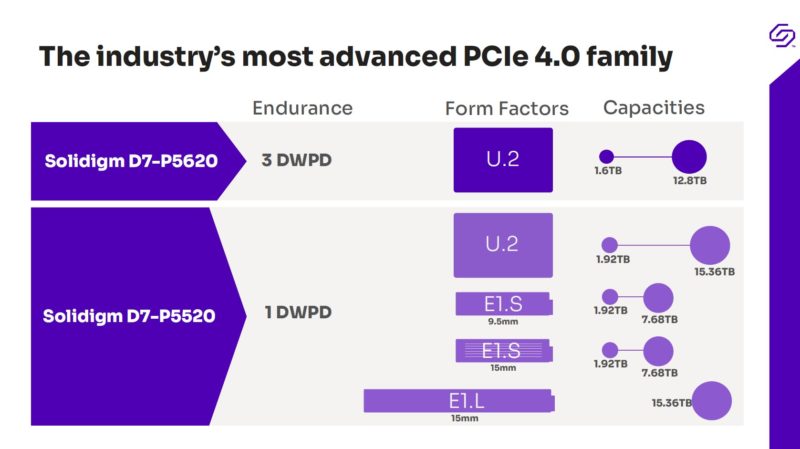
Here is the spec sheet for the D7-P5620 SSD:
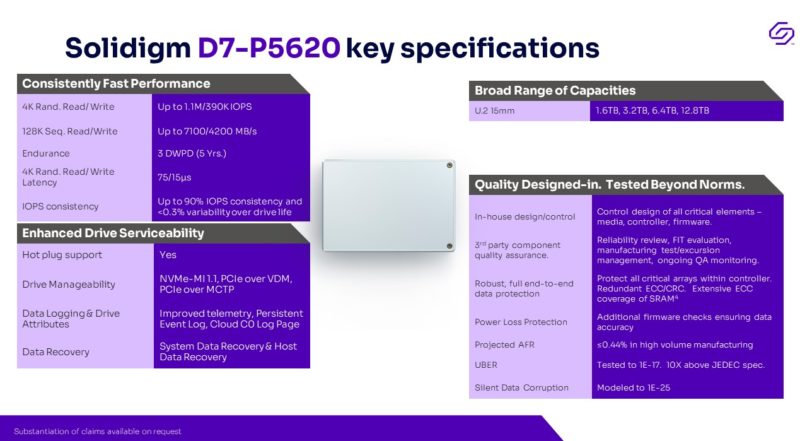
Here is the D7-P5520’s spec sheet. Note that the E1.L only comes in at 15.36TB, although that form factor has hit over 30TB per device previously.
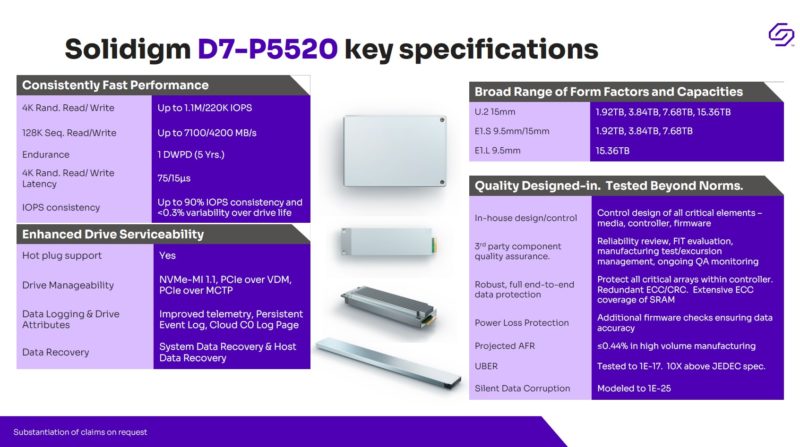
As we heard from Intel previously, again many of the same team members, the drives are focused on lower queue depth and some mixed performance.
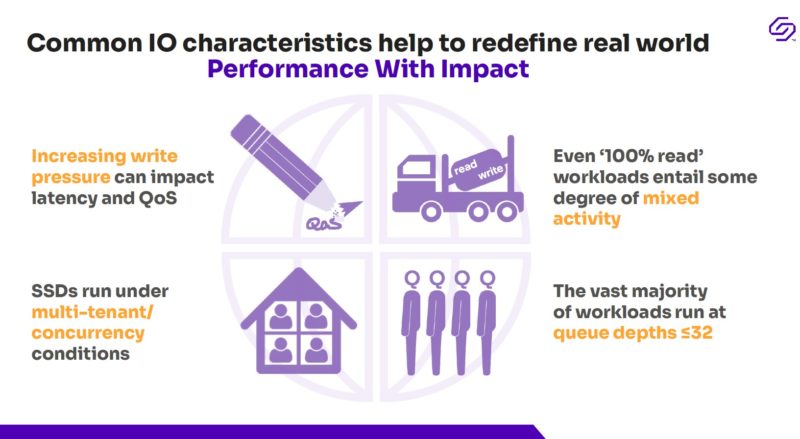
The Intel team also focused on reliability and that is something we now see from Solidigm.
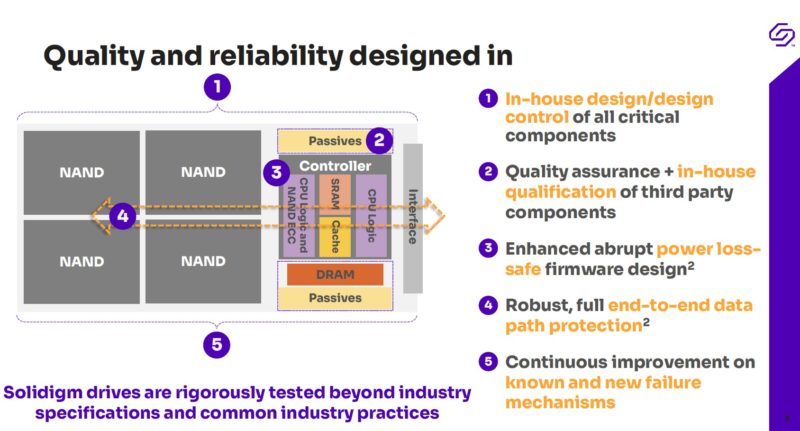
With more interface bandwidth going from PCIe Gen3 to Gen4, sequential reads can double and there is across the board uplift in performance on the D7-P5620 drive designed for heavier write workloads.
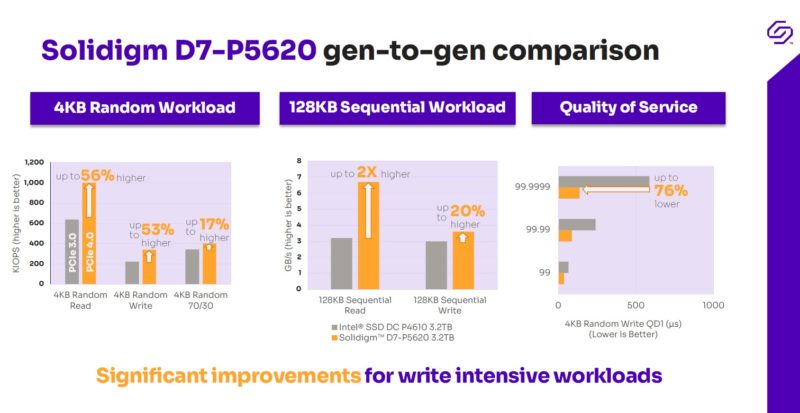
While the Px5xx series at Intel had Gen4 support with the D7-P5510, we get more performance again. We will quickly just state that it looks like Solidigm is using two generation old PCIe Gen3 DC-P4510 drives as the comparison point here, not the D7-P5510 generation.
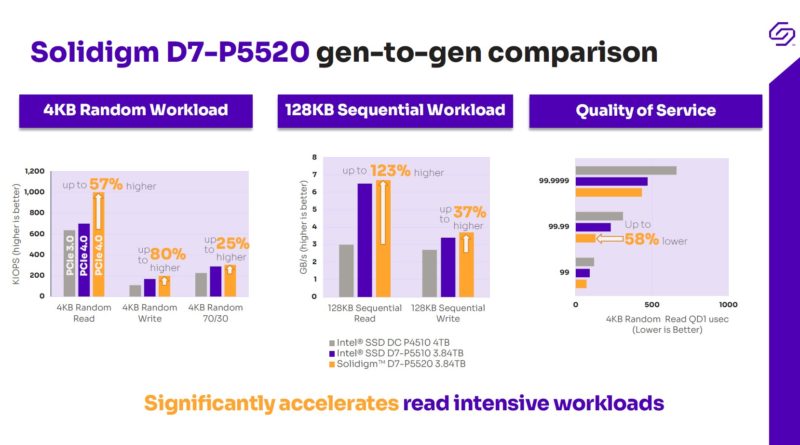
Still, new faster drives are always good. We also see a lot of emphasis on the EDSFF form factor for the mainstream markets with this. Both E1 and E3 EDSFF will to take over from M.2 and 2.5 in SSDs over the coming years. What is absent in this generation is a PCIe slotted card that Intel used to sell. In with EDSFF, out with PCIe and sub 1TB capacities.
Final Words
This is a big launch just to see Solidigm launch a product with its brand. For the time being, Solidigm will still sell and support Intel-branded drives since those products were launched some time ago. OEMs and customers qualify drives so changing Intel to Solidigm would trigger a re-validation process that was easier to avoid at this point. In the future, it is important that the new products are launched under Solidigm’s brand.

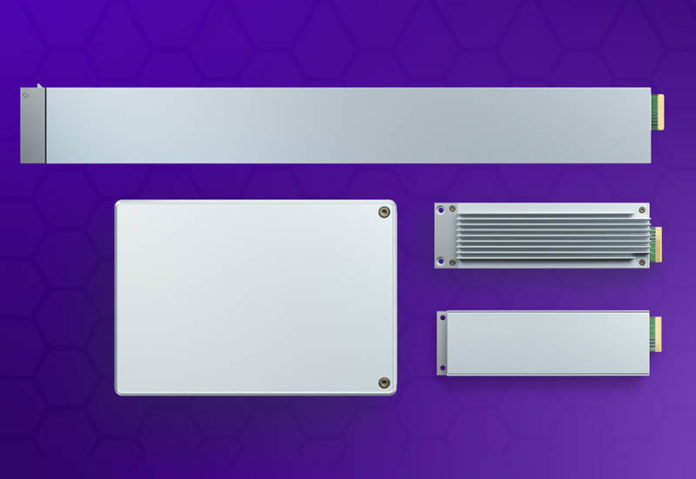
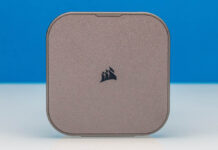
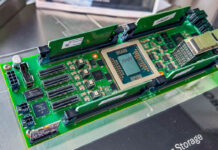
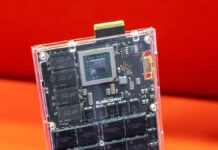
Does anyone make an external PCIe-connected drive bay that takes E1 drives? Say with a PCIe switch inside? That way we could utilize these newer drives with older servers.